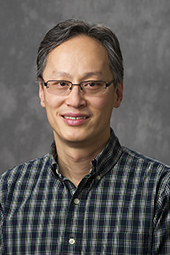
Associate Professor
Department of Biochemistry, College of Agriculture
My research focuses on epigenetic factors such as the SET domain-containing histone methyltransferases that we have found to govern antifungal drug resistance and pathogenesis. We are currently studying Candida glabrata and Candida auris which are opportunistic fungal pathogens that are multi-drug resistant. We also use Galleria mellonella larvae as an infectious model system to study in vivo drug efficacy and altered virulence of genetically modified fungal pathogens.
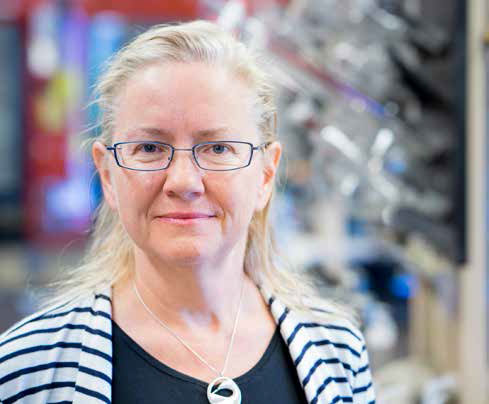
AW Kramer Distinguished Professor
Department of Chemistry, College of Science
The Chmielewski Research Group is composed of interdisciplinary scientists that address fundamentally important problems at the interface of Chemistry, Biology and Medicine. The major areas of research include their pioneering work in the design of agents to modulate the protein-protein interactions of HIV and more recently SARS-CoV-2, the development of agents that target intracellular pathogenic bacteria, novel agents to eradicate HIV reservoirs and peptide-based biomaterials for regenerative medicine. In each of these areas, the Chmielewski group is designing unique chemical approaches to solve significant issues in human health.
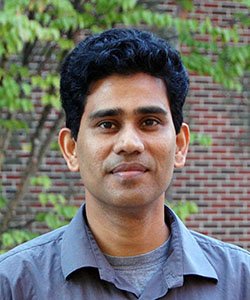
Professor
Department of Chemistry, College of Science
The Das group relies on X-ray crystallography for structural characterization of deubiquitinases (DUBs) and their complexes with interacting partners. For validation they use biophysical methods to investigate protein-protein interactions in solution. Isothermal calorimetry (ITC) is used to determine affinity parameters of DUB variants for their binding partners. Graduate students are trained on the use of ITC instruments administered by the director of the Bindley Biophysical Analysis Laboratory, as well as data analysis using software such as SEDPHAT. Similar training applies to analytical ultracentrifugation experiments for quantitative determination of protein-protein interaction parameters.
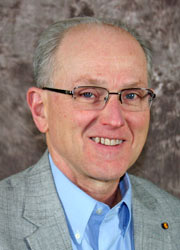
Professor
Department of Medicinal Chemistry & Molecular Pharmacology, College of Pharmacy
Our primary interests are at the intersection of chemical and systems biology to enhance the drug discovery and development process. The research group uses both hypothesis-driven and technology-focused discovery approaches to address therapeutic strategies for unmet needs in treating several cancer diseases, emerging viral infections, and neurodegenerative diseases. We engage a number of collaborative efforts to enhance the overall approaches to addressing these objectives.
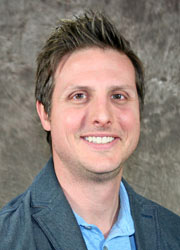
Associate Professor
Department of Medicinal Chemistry and Molecular Pharmacology, College of Pharmacy
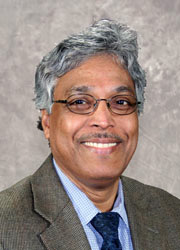
Distinguished Professor
Department of Chemistry, College of Science
My research group is involved in multidisciplinary research projects in the areas of synthetic organic, bioorganic and medicinal chemistry. Of particular interest, we are investigating:
- Synthesis and biological studies of Bioactive Natural Products
- Design and synthesis of Molecular Probes for Bioactive Peptides and Proteins
- Structure-based Design of Enzyme Inhibitors for Alzheimer's Disease and AIDS
- Development of Asymmetric methodologies (Catalytic and Stoichiometric)
- Multicomponent Reactions (MCR) for Highly Functionalized Products
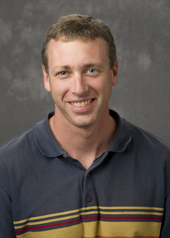
Resource faculty member
Associate Professor of Biochemistry, College of Agriculture
My lab is interested in the discovery of new molecular targets for antifungal therapeutics. Specifically, we are currently interested in kinases and phosphatases that play important roles during infection by the opportunistic human fungal pathogen Candida albicans, as well as other dangerous fungal pathogens. We combine molecular genetics, cell biology, biochemistry, and omics approaches with animal infection models to better understand how protein phosphoregulation contributes to pathogen biology and the evolution of antifungal drug resistance, and to identify novel therapeutic solutions.
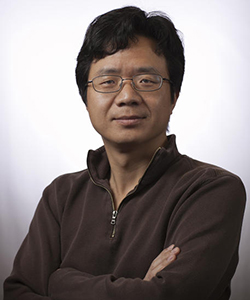
Professor
Department of Biological Sciences, College of Science
Dr. Jiang uses cryo-EM to study the structures of viruses, large macromolecular complexes, and membrane proteins. Trainees also work on development of various cryo-EM methodologies including image processing algorithms, high performance computing, data collection automation, and sample preparation. These technical advances will help cryo-EM single particle and tomographic 3-D reconstructions to be routinely solved at near atomic resolutions, and ultimately evolve these techniques into easily accessible and high-throughput tools.
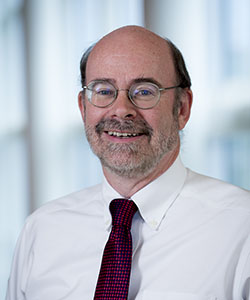
Distinguished Professor
Director of Purdue Institute of Inflammation, Immunology and Infectious Disease (PI4D)
Department of Biological Sciences, College of Science
The Kuhn laboratory studies the molecular mechanisms involved in viral replication and pathogenesis, focusing on several groups of RNA-containing viruses that include significant human pathogens. They study the assembly of the virus particle, perform molecular analyses of structural proteins and their role in pathogenesis, and investigate the replication of positive-strand RNA genomes and interactions with the host. In each area they use a combination of biochemical, molecular genetic and biophysical techniques to gain insight into the molecular requirements for the replication, infectivity, and pathogenesis of the virus. Trainees are currently involved in collaborative research and joint training of graduate students in conjunction with several other mentors of this training grant.
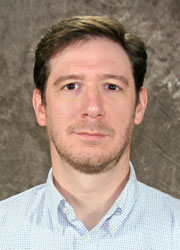
Associate Professor
Department of Medicinal Chemistry & Molecular Pharmacology, College of Pharmacy
The central theme of research in the LaCount lab is the discovery and characterization of protein interaction networks between intracellular pathogens and their host cells. We seek to understand how intracellular pathogens manipulate host cells, how host cells respond to intracellular pathogens, and how this information can be exploited to develop new antimicrobial or antiviral drugs. We are interested in developing new host-pathogen protein interaction networks, comparing host-pathogen interaction networks from different organisms, and performing in-depth analyses of the roles of host proteins in virus and parasite lifecycles. Our research primarily focuses on two mosquito-transmitted pathogens that are major global health problems: the malaria parasite Plasmodium falciparum and dengue virus.

Distinguished Professor
Department of Chemistry, College of Science
Dr. Low's trainees have developed small-molecule conjugates that can be targeted specifically to pathologic cells while avoiding collateral toxicity to healthy cells. In the case of cancer, the lab has exploited upregulation of high-affinity folate receptors on carcinomas found in ovary, breast, endometrium, lung, and kidney, and designed imaging and therapeutic agents that target these cancers. More recently, Low has developed a targeting ligand that selectively delivers attached drugs to prostate cancer cells, enhancing both the diagnosis and treatment of prostate cancer. Ligand-directed imaging and drug delivery for multiple autoimmune, inflammatory, and infectious diseases are also being developed. Low has graduated 62 PhD students including 5 under-represented minorities (URMs), with approximately half employed in academia and research hospitals, and the remainder pursuing careers in the pharmaceutical industries. Low and trainees have helped to found several companies in order to commercialize their advances, including Endocyte (publicly traded on NASDAQ), HuLow, and On-Target.
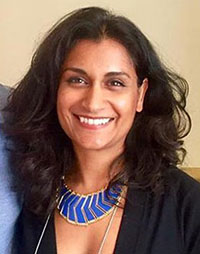
Associate Professor
Department of Biological Sciences, College of Science
Trainees employ a multidisciplinary approach to understanding the functional repertoire of Fic (filamentation induced by cyclic-AMP) proteins in regulating prokaryotic and eukaryotic signal transduction pathways, including X-ray crystallography. Fic proteins carry out diverse post-translational modifications, predominantly adenylylation/AMPylation, which involves the covalent addition of adenosine monophosphate to a target protein. Most recently, trainees in her laboratory identified a hitherto unknown role for the sole human Fic protein, HYPE/FicD, in regulating the mammalian unfolded protein response by adenylylating the ER chaperone BiP. They have now extended these findings to diseases attributed to protein misfolding.

Professor, Department Head
Department of Biochemistry, College of Agriculture
Dr. Mesecar investigates the structure and function of biomedically important enzymes using X-ray crystallography, enzyme chemistry & kinetics, proteomics, assay development and optimization, high-throughput screening, and molecular modeling. Mesecar has pioneered the structure-based design of highly selective, non-covalent inhibitors of deubiquitinating enzymes such as papain-like protease (PLPro) in the SARS virus, and ubiquitin-specific protease-7 (USP7), which regulates the P53/MDM2 axis in cancer. Other research projects address the structure and function of the Keap1-Cul3-Rbx1 Ubiquitin E3-ligase system, the mechanisms of bacterial adenylyltransferases in the CoA, NAD, FAD and menaquinone biosynthesis pathways, and the structure-based design of targeting ligands against Muc1, an oncoprotein expressed by 90% of known cancers.
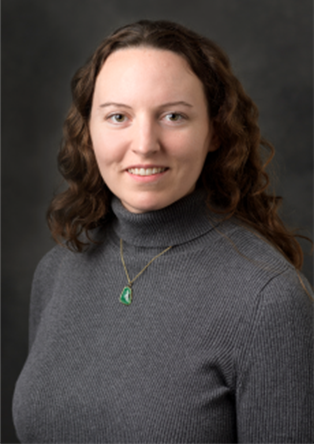
Assistant Professor
Biological Sciences and Chemistry
While conformations and dynamics of protein monomers in solution have been well studied, their organization and coordinated functions within the complex chemical and physical environments of the cell are less well understood yet critical for the development of medical therapies and biotechnology. My group uses an array of biophysical techniques, including cryo electron tomography, correlated light and electron microscopy, and fluorescence spectroscopy, to study protein ultrastructures involved in virus-host interaction and bacterial microcompartment function.
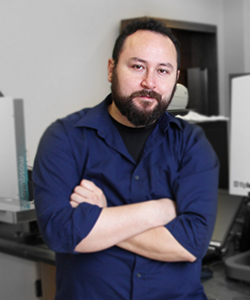
Associate Professor
Department of Biological Sciences, College of Science
The Noinaj lab is interested in understanding how pathogenic bacteria use virulence factors found on their membranes to mediate infection. These virulence factors are present in the outer membrane of Gram-negative bacteria or within plastids such as in malaria and Toxoplasma gondii. In particular, the lab studies two essential membrane-embedded complexes: the BAM complex from E. coli and Neisseria and the TOC complex from plastids. Trainees use structural analysis by X-ray crystallography/low-angle scattering/EPR/EM and functional studies of these assemblies with the long-term goal of drug discovery and development against multidrug resistance pathogens.

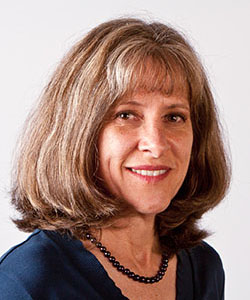
Distinguished Professor
Department of Medicinal Chemistry and Molecular Pharmacology, College of Pharmacy
The Post lab studies the structural, dynamical, and energetic properties of biological molecules and molecular recognition associated with ligand binding, protein-protein interactions, enzymatic catalysis, and conformational equilibrium. Recent goals are to describe and understand the mechanism of conformational activation of tyrosine kinases, the structural response to tyrosine phosphorylation in signal transduction, and large-scale concerted dynamics of viral capsids as it relates to antiviral mechanisms of action and capsid molecular recognition. Trainees learn a variety of biophysical techniques with emphasis on solution NMR, and utilize and develop computer molecular dynamics simulation methods, a natural complement to NMR. Post is one of the developers of the molecular dynamics program CHARMM.
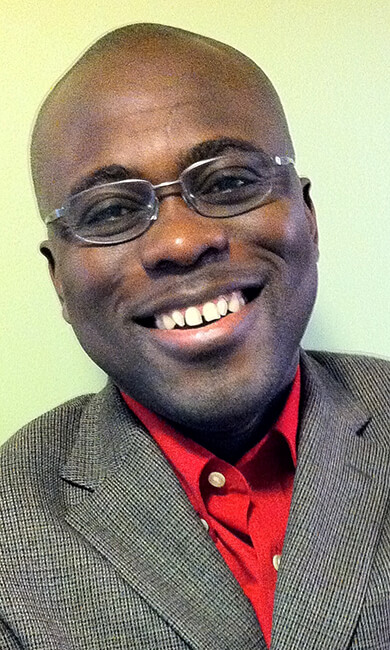
Professor
Department of Chemistry, College of Science
Professor Sintim's research focuses on:
- Cyclic dinucleotide signaling in bacteria and immune cells: we use chemical probes, as well as global proteomics, to identify signaling pathways and key proteins that are involved in cyclic dinucleotide (cdn) signaling. Inhibitors of cdn signaling have the potential to be used as anti-cancer and anti-inflammatory agents.
- Bacterial quorum sensing: bacteria communicate with each other via small diffusible signal molecules (autoinducers). We are interested in developing novel inhibitors of quorum sensing as anti-virulence and anti-biofilm agents.
- Novel antibacterial and anti-biofilm agents: we are developing novel compounds that are active against drug-resistant and persister bacteria. We are particularly interested in small molecules (MW less than 500) that are able to clear bacteria from host cells, such as macrophages.
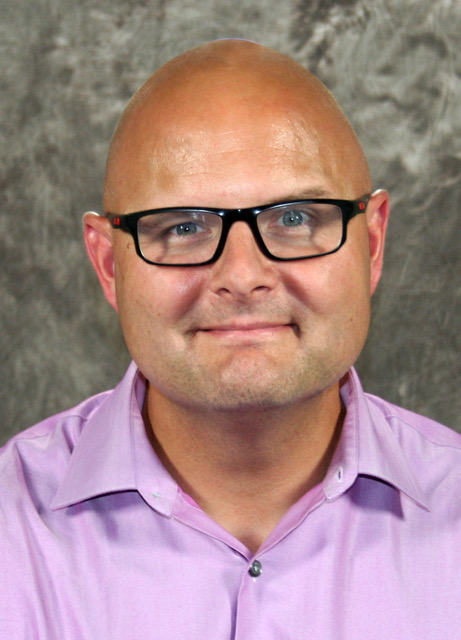
Professor
Department of Medicinal Chemistry and Molecular Pharmacology, College of Pharmacy
Dr. Stahelin’s research focuses on the molecular basis of lipid-protein interactions. The major systems under investigation are virus structure and assembly from the host cell plasma membrane and sphingolipid signaling in inflammation and cancer. Biophysical studies in vitroand in cell culture of protein interactions at the membrane interface utilize methods such as single molecule imaging, super resolution microscopy, and structural biology (cryo-EM). Complementary biophysical techniques such as surface plasmon resonance, isothermal titration calorimetry, hydrogen-deuterium exchange mass spectrometry, and fluorescence are used to gain a mechanistic understanding of the molecular basis of lipid binding and protein conformational dynamics in the presence of membranes.
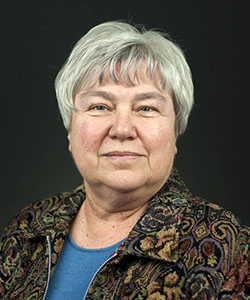
Professor
Department of Biological Sciences, College of Science
Her lab applies X-ray crystallography and molecular biology to systems where proteins work together in membranes to perform biological functions in cancer, heart disease, and transport molecule-related diseases. Structural and functional studies rely on combinatorial approaches, such as crystallographic and EPR investigation of ABC transporters from bacteria and mammals. Mechanistic studies of the enzymes involved in isoprenoid biosynthesis in mammals and pathogenic bacteria have expanded into time-resolved X-ray crystallography and antibacterial drug design. Phosphatase and kinase partners critical in the cell cycle and in the development of metastatic potential in cancer are a third topic of investigation. Structural studies, combined with analytical ultracentrifugation, mass spectrometry, surface plasmon resonance, and fluorescence spectroscopy give a multifaceted biophysical view of these complex systems.
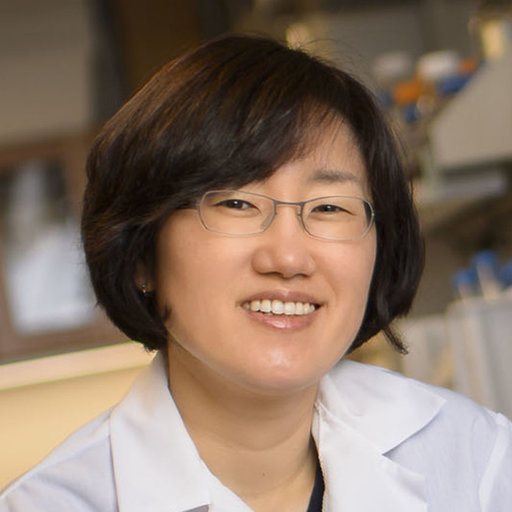
Professor
Department of Industrial and Physical Pharmacy, College of Pharmacy
We strive to make a significant impact in public health through research. The goal of our research is to develop new drug delivery systems and biomaterials, which will enable a safe, efficient, and clinically viable delivery of drugs, genes, and/or cells in a target-specific manner.
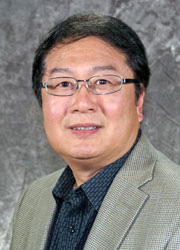
Distinguished Professor, Department Head
Department of Medicinal Chemistry & Molecular Pharmacology, College of Pharmacy
Research in this laboratory spans the disciplines of chemistry and biology with an emphasis on the structure and function of protein tyrosine phosphatases (PTPs), roles of PTP in normal physiology and pathological conditions, and the design and synthesis of PTP inhibitors as chemical probes to interrogate PTP function and as novel therapeutics for the treatment of cancer, diabetes and obesity, autoimmune disorders, neurodegenerative and infectious diseases.
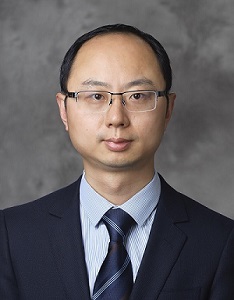
Associate Professor
Department of Industrial and Physical Pharmacy, College of Pharmacy
The Zhou Lab focuses on developing novel inhalation therapies for the treatment of lung infections. Bacterial and viral infections in deep lungs are deadly especially for those infections caused by the multi-drug resistant pathogens. The Zhou Lab employed novel particle engineering techniques such as spray-freeze-drying and electrospray drying to develop highly efficient inhalation medicines. Such inhalation medicines can be delivered directly to the infection sites in the deep lungs with maximized local drug concentration and minimized systemic toxicity. In addition, human lung epithelial cell models have been developed to evaluate cytotoxicity and drug delivery performance at the cell level. Lung infection animal models have also been established to assess in vivo pharmacokinetics and pharmacodynamics of the developed formulations. Trainees in the Zhou Lab will gain experience in formulation, manufacturing, drug delivery and drug efficacy of inhalation medicines against deadly lung infections.